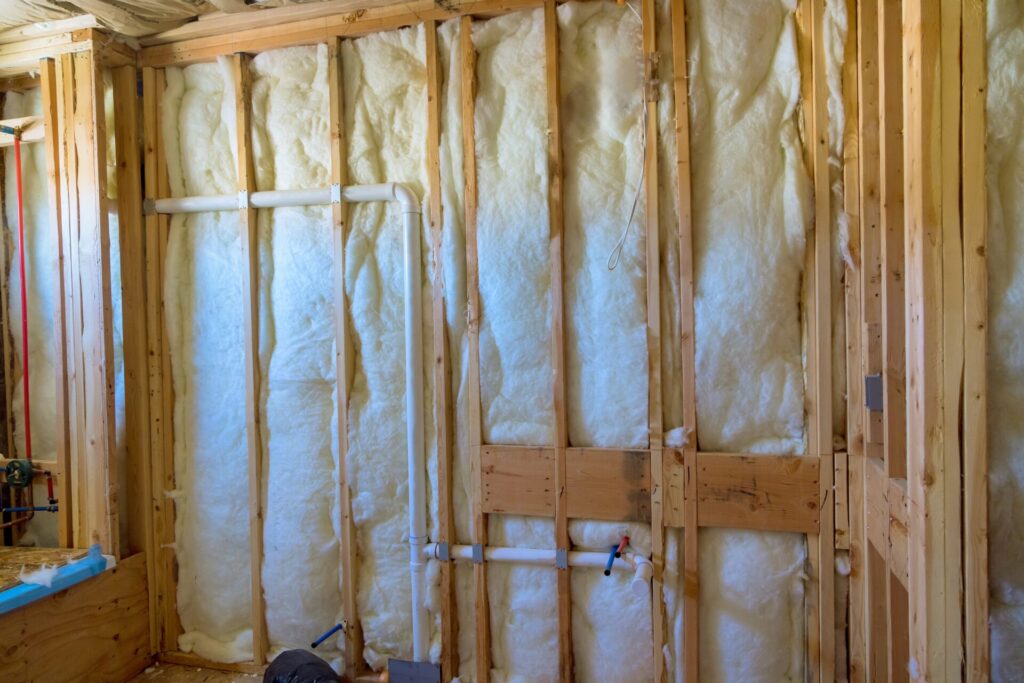The Daily Insight
Stay updated with the latest news and insights.
Keep Your Cool: Insulate Like a Pro
Master insulation secrets to stay cool all year! Discover pro tips to cut energy costs and boost comfort in your home.
Top 5 Insulation Materials for Maximum Energy Efficiency
When it comes to enhancing your home's energy efficiency, choosing the right insulation material is crucial. Here are the top 5 insulation materials that can help you achieve maximum energy savings:
- Fiberglass Insulation - One of the most common insulation materials, fiberglass is lightweight, non-combustible, and resistant to moisture. Its R-value ranges from 2.9 to 4.3 per inch, making it a reliable option for both attics and walls.
- Foam Board Insulation - Known for its high insulating value, foam board insulation provides excellent thermal resistance and is perfect for basement walls and exterior walls. With an R-value of 3.8 to 6.5 per inch, it can significantly reduce heat loss.
- Spray Foam Insulation - This expanding foam creates a tight seal in walls and ceilings, providing superior insulation with an R-value of 6 to 7 per inch. It’s ideal for irregular spaces and can also act as a barrier against moisture.
Continuing with our list, we have:
- Cellulose Insulation - Made from recycled paper, cellulose is an eco-friendly option that boasts an R-value of 3.2 to 3.8 per inch. It's treated for pest resistance and works well in attics and wall cavities.
- Mineral Wool Insulation - Also known as rock wool, this insulation material is fire-resistant and provides excellent sound absorption. With an R-value of 3.0 to 3.4 per inch, it’s versatile and suitable for various applications.
By considering these top insulation materials, you can make informed decisions that will lead to improved energy efficiency and comfort in your home.

How to Choose the Right Insulation for Your Home
Choosing the right insulation for your home is crucial for ensuring energy efficiency and comfort. Insulation acts as a barrier to heat flow, meaning it keeps your home warm in the winter and cool in the summer. When selecting insulation, consider the R-value, which measures the material's resistance to heat transfer. Higher R-values indicate better insulation performance. Additionally, evaluate the insulation type that best suits your needs, such as fiberglass, foam, cellulose, or spray foam. Each material has its own benefits and drawbacks, so researching and comparing them is key to making an informed decision.
Another important factor to consider is the location of the insulation within your home. For instance, attic insulation is essential for preventing heat loss, while wall insulation can enhance soundproofing and energy efficiency. You should also assess any local building codes and regulations that may affect your insulation choices. In summary, keep in mind the R-value, insulation type, and installation area when choosing the right insulation for your home, ensuring a comfortable and energy-efficient environment.
Insulation Myths Busted: What You Really Need to Know
When it comes to insulation, there are a plethora of myths that can mislead homeowners into making poor decisions. One common myth is that all insulation types perform equally well. In reality, the effectiveness of insulation depends on its R-value, which measures resistance to heat flow. This means that different materials, such as fiberglass, foam, or cellulose, can offer vastly different levels of efficiency. Understanding these differences is crucial to ensuring your home remains energy efficient and comfortable throughout the seasons.
Another widespread misconception is that insulation is only necessary in cooler climates. Contrary to this belief, proper insulation is vital in both hot and cold regions. It helps maintain a consistent indoor temperature, reducing heating and cooling costs year-round. Additionally, effective insulation can improve indoor air quality by minimizing drafts and moisture buildup. Don’t let these insulation myths steer you away from making informed choices for your home — understanding the truth can lead to significant savings and comfort.